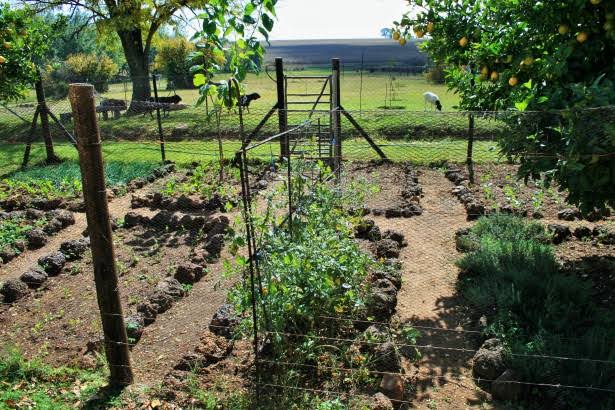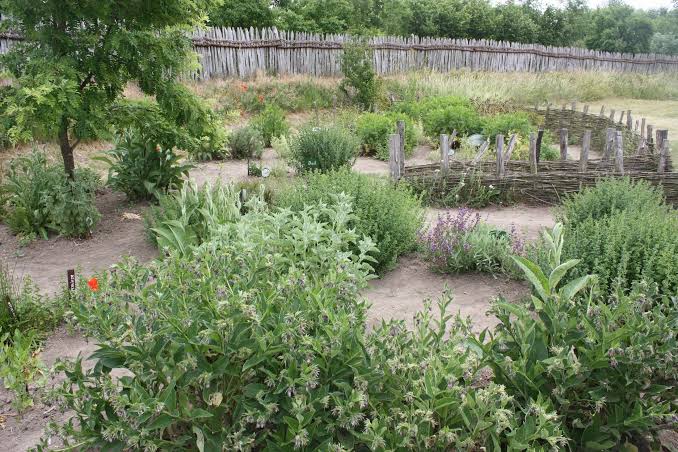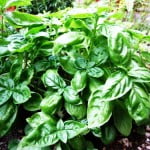Start a herb garden with 5 easy herbs for cooking and your medicine cabinet!
In medieval times, the ‘lady of the manor’ always had a herb garden to supply the villagers under her care with healing herbs.

Needless to say, some of these herbs were also used for cooking in her own kitchen. There’s still a certain amount of romantic nostalgia associated with herb gardening.
If you’ve ever wanted to plant your own herb garden, but became frustrated over how to begin, here is some inspiration and tips. You’ll reap the rewards in fresh seasonings (oh, so much better than dried!), as well as a few handy, safe herbs for medicinal use!
You can plant a herb garden in pots, or dedicate an area of your garden to herbs. Here, we’ve got five herbs that will serve you well.

Rosemary is a perennial, which is both medicinal and culinary in its uses. You can find this little gem in both small (4-inch) pots, as well as a shrub size. Young plants can be trained as topiary, or you can just let it do its normal thing as a decorative garden shrub.
In any case, rosemary is great with a pot roast or steak, a terrific addition to roasted potatoes and goes well with fish. As a medicinal, rosemary is good for your cardiovascular system, so use this one liberally.
Sage is another good candidate for the novice herb gardener. It’s easy to grow and, in addition to dressing up poultry and fish dishes, it can be brewed into a tea, which is quite effective in relieving excessive perspiration, night sweats and hot flashes during menopause.

You can propagate a plant with a single leaf, if you’ve got a friend or neighbour with a sage plant. Lay the leaf in a dish of sand, make small cuts along the veins, and then dust it lightly with rooting hormone from the nursery. Keep it in a sunny windowsill, spraying it with water daily to keep it moist. You’ll soon have a viable plant!
Ever thought of growing your own garlic? Plant cloves of garlic (ask your nursery for types and planting times for your area) and wait for the harvest! Not only does garlic do heavy duty in your menus, but also provides more in medicinal value than any other herb I can think of: are you ready? This list is long!
Garlic increases blood circulation while it reduces HBP, the LDLs (bad cholesterol) and simultaneously increases the HDLs (good cholesterol). It is widely used to prevent and treat heart disease, upper respiratory diseases, (including the common cold, flu and pneumonia), as well as many types of cancer.

Garlic contains properties, which inhibit the growth of tumors, and prevents yeast infections and ulcers! This sterling herb is also an excellent blood detoxifier, a natural antibiotic effective against 27 (and still counting) pathogens, including staphylococcus.
It rids the body of heavy metals, including lead and mercury, while boosting your immune system response. It also improves digestion. If I were a herb, I’d marry a garlic clove! Pass me another slice of garlic bread, please.
Cayenne peppers deserve a prominent spot in your herb garden. A dash of hot goes well in salsas, white chowders and gumbo (a personal favorite). Like garlic, cayenne is a natural antibiotic, and regulates your cholesterol and blood pressure. It strengthens your thyroid, and reduces stress and fatigue.
Peppermint is sometimes viewed as an invasive plant, spreading and overtaking the garden plot. For this reason, you may want to confine this herb to a pot. Peppermint is another perennial with both culinary and medicinal uses. It’s a popular seasoning for lamb, with good reason.
Young meats are harder to digest, and peppermint is up to the task. It tastes delicious and helps you digest that meal comfortably. A simple tea of peppermint, fresh from your herb garden, resolves any digestive problems that might ensue.
So now, make your commitment to that nostalgic herb gardening project with these five herb stars. All you need is a simple and prolific beginning.








